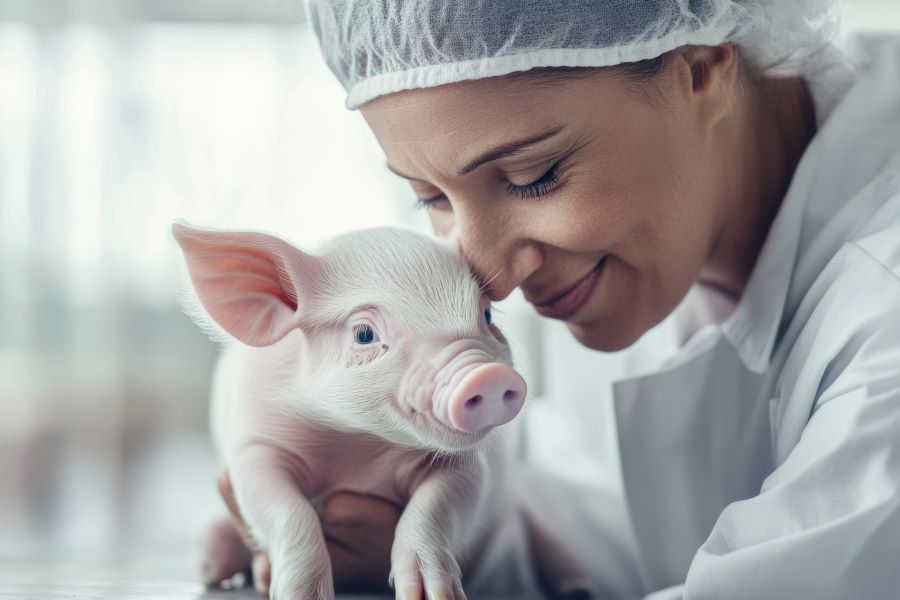Humane World for Animals: Loopholes keep animal testing in nutrition out of sight

Consumers are largely unaware of the use of animals in food and supplement development. A blind spot in the US Animal Welfare Act (AWA) excludes the species of animals widely used in these industries. Nutrition Insight speaks with Humane World for Animals to learn about the loopholes that allow animals to go unreported and reveal what it would take for scientists to commit to cruelty-free practices.
The AWA does not protect rats, mice, or birds, and they are heavily used in nutrition studies. Greg Sower, toxicologist and science adviser in the Animal Research Issues department, criticizes this exclusion, flagging how this results in their continued pain and distress.
Animal experiments result in research that is difficult to confirm or replicate, while reducing opportunities to create and apply new approach methodologies (NAMs).

“Rats and mice are commonly used in food substance safety studies, including for food additives, generally recognized as safe (GRAS) substances, new dietary ingredients for dietary supplements, and nutrition studies,” notes Sower.
“The FDA and National Institutes of Health (NIH) provide recommendations for the care of these animals in these studies, but because rats and mice are excluded from the AWA, oversight is very limited, and it is difficult to track how they are used and the practices they are subjected to.”
Sower adds that there is little transparency due to a lack of reporting requirements and enforcement, which makes experiment reproducibility and accountability difficult.
“Additionally, the AWA requires researchers to ‘consider alternatives to any procedure likely to produce pain or distress in an experiment animal.’”
 Greg at the 2025 Society of Toxicology conference in Orlando, Florida, US.“But because these animals are excluded from the AWA, there is little incentive for researchers to use non-animal alternatives, which the FDA has recently committed to expanding,” he points out.
Greg at the 2025 Society of Toxicology conference in Orlando, Florida, US.“But because these animals are excluded from the AWA, there is little incentive for researchers to use non-animal alternatives, which the FDA has recently committed to expanding,” he points out.
The GRAS loophole
Sower suggests that the role of animals in nutrition studies is rarely discussed compared to drug tests because few people realize the extent of animal testing. Since the AWA excludes rats and mice, and there is a lack of reported numbers, it is difficult to publicize and know how many individuals are used.
“Additionally, while some nutrition studies may attract media attention, many fail to do so or are not publicized due to negative or inconclusive results. And most food substance companies in the US use the GRAS route to market, which does not require reporting to the FDA.”
“While there are many GRAS notices on the FDA inventory, there are many more that are self-affirmed, and the studies are not available for review, making them difficult to track. The recently leaked MAHA draft report notes the intention to reform GRAS to increase transparency, but that is unlikely to be effective without congressional action,” Sower explains.
He notes it is common to see warnings of potential side effects from pharmaceutical drugs, so consumers understand there is a risk-benefit to drugs.
“Foods and supplements, however, are often presumed to be inherently safe, so why would people consider animal testing to be involved?”
Rats, piglets and dogs
Sower exposes that rats and mice are the most often used animals in nutrition and food safety tests to study potential effects on humans.
Since the AWA excludes rats and mice, and there is a lack of reported numbers, it is difficult to publicize and know how many individuals are used.“Other animals, such as piglets, may be used for certain types of tests, such as infant formula nutrition studies.”
“I think people would be surprised to learn that the FDA only recently announced the elimination of dog testing from food additive evaluations, though the FDA’s online guidance still recommends that dogs be used,” he flags.
AWA revisions to no animals in labs
Sower underscores the importance of reporting the use of animals in studies to infer trends and spark legal or policy changes.
“If the AWA were revised to include reporting on rats and mice, there would be minimum requirements for their care, and the number of animals would have to be reported according to pain and/or distress categories — and whether pain and/or distress were relieved — as is done for other animals regulated under the law.”
“Additionally, the potential for AWA inspections may increase animal welfare at the performing institutions. These increased requirements would likely incentivize researchers to use more NAMs or at least limit the number of studies and animals used,” states Sower.
Although these revisions can improve the current system, he underlines that they will not change the fact that animals in the lab are not normal. He criticizes the distressing, ultra-processed, unnatural environment in which animals are fed experimental diets paired with poor socialization and constant handling.
“What researchers really want are research methods that can better mimic how the human body works. Non-animal alternatives, not animals, are the solution.”
 Although AWA revisions may improve animal care, Sower underlines that they will not change the fact that animals in the lab are not normal.Exploring NAM’s Nutrition Insight recently spoke to researchers about organ-on-chip technology, which addresses a major gap in current nutrition research — the limited capacity to capture the complex interactions among diet, gut microbiota, and human organs.
Although AWA revisions may improve animal care, Sower underlines that they will not change the fact that animals in the lab are not normal.Exploring NAM’s Nutrition Insight recently spoke to researchers about organ-on-chip technology, which addresses a major gap in current nutrition research — the limited capacity to capture the complex interactions among diet, gut microbiota, and human organs.
Cruelty-free nutrition?
Sower believes having greater transparency will inform the public of the large number of animals used in nutrition and food science that are forcefully fed supplements and foods, “despite the ability to translate these animal tests to human health remaining questionable.”
“Increased public awareness and scrutiny regarding animal testing would help to incentivize switching to NAMs while reducing unnecessary or questionable animal research and increasing the ability to translate the research to humans.”
“The increased transparency could also change corporate behavior and result in a commitment to cruelty-free products as it did for cosmetics,” concludes Sower.
PETA’s director of Science Advancement and Outreach, Laboratory Investigations, previously told us about ethical biases and outdated assumptions in human nutrition research, while the director of Medical Research at the Physicians Committee for Responsible Medicine warned of the cost of negligence of ethics reviewers on NAMs.













